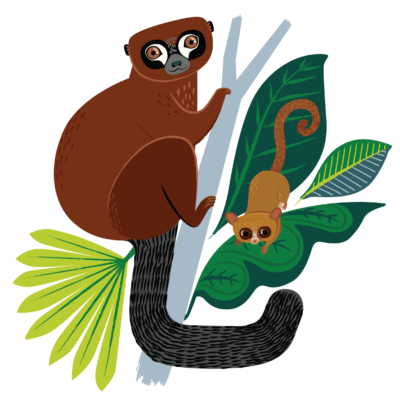
The 2022 World Lemur Day logo featured a red-bellied lemur (left) and rufous mouse lemur (right).
Scientific Name: Eulemur rubriventer
Download as PDFRed-bellied lemurs are medium sized lemurs residing in primary forests and primary and secondary coastal rainforests. They live monogamously in bonded adult pairs with their offspring, creating small family units of 2-6 individuals. They exhibit some sexual dichromatism, with adult females having a large cream-colored patch on their bellies and adult males having white patches under their eyes resembling teardrops.
Diet
They are a frugivorous species of lemur but will supplement their diet with leaves, nectar from flowers, and even insects, mushrooms, and tree bark!
Geographic Range
The Red-bellied Lemur can be found along a thin, though long range from southern (Pic d’Ivohibe and the Manampatrana River) to northern (Tsaratanana Massif) Madagascar. The highest population size can be found in Ranomafana National Park.
Conservation Status
The Red-bellied Lemur is listed as Vulnerable on the IUCN Red List. Its current population trend is decreasing.
Threats
The primary threat to this species is forest fragmentation due to fires (slash and burn agriculture) and logging. Red-bellied lemurs are also at risk from hunting and capture for the pet trade.
LCN Members Working to Save Red-bellied Lemurs
Where to See Red-Bellied Lemurs in Madagascar
- Ranomafana National Park
- Tsinjoarivo
- Marojejy National Park




